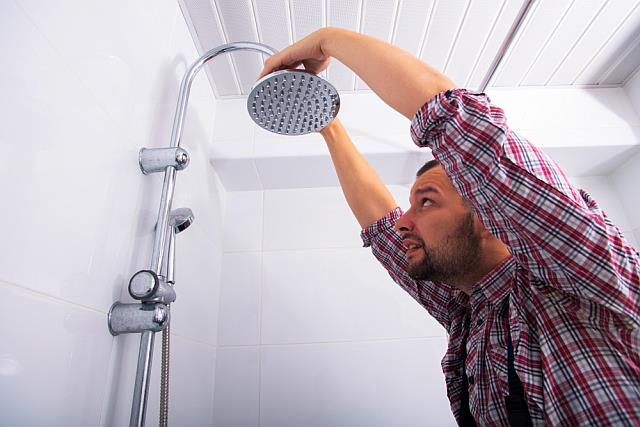The recent recommencement of load shedding brings home just how dependent we all are on a continued supply of power in order to go about our daily business and private lives. Apart from this, going off the grid makes pure economic sense as electricity and other utility costs continue to rise inexorably.

Anthony Stroebel, GM for real estate services at Pam Golding Properties and a director of the Green Building Council of South Africa (GBCSA), points out that having your home off the grid is becoming an increasing imperative, apart from being both a lifestyle and property investment. And there is no shortage when it comes to options.
“Since we began using solar panels to heat up our geysers, the available technology and options to reduce our load on the country’s dwindling resources have exploded and are rapidly becoming nearer one’s reach. Apart from which, we increasingly find that green features in a home not only enhance appeal and, potential value, they also add saleability.”
Apart from looking into the future of the planet, the question on everyone’s mind is around cost and the time it takes to amortise an off-the-grid investment. As a trend that is only growing in influence, pressure is beginning to build for banks to come up with more creative lending solutions that offer pre-packaged end-user financing options.
Grahame Cruickshanks, managing executive for market engagement at GBCSA, explains some of the easily-available investment options and the time it would take for these to break even. “Our homeowner awareness campaign identifies three main options towards greening a home.”
These are:
1. No Cost

“This is an interesting one that could also be called ‘no excuse’, and simply suggests that we change our behaviour in order to reduce our consumption,” says Cruickshanks. Here are a few of their favourites:
- Lower the thermostat on your electric geyser to 55 or 60 degrees and remember to switch it off when you go away for longer periods.
- Pool pumps use a lot of electricity. Reduce the time your pool pump runs to four to six hours in summer and two to three hours per day in winter.
- Ironing also uses a lot of electricity. Separate laundry into essential ironing and items that can be folded and packed away.
- Set the washing machine to use cold water (30 degrees) for all clothing colours.
- Avoid using the tumble dryer and instead dry your clothes on the wash line.
- Geysers are typically the biggest electricity guzzlers in a home. Take shorter showers - ideally no more than two minutes.
Get more ‘No Cost’ tips online.
2. Low Cost

If you are ready to invest, but not break the bank, the good news is that you have plenty of options:
- Install a geyser timer that switches off during the middle of the day.
- Target your heat. Use electric blankets and hot water bottles instead of heating an entire room.
- Replace your incandescent light bulbs with Light Emitting Diodes (LEDs).
- Install a low-flow shower head, designed to reduce the water flow while still giving you a great shower.
- Install tap aerators - which again reduce the water flow - to reduce the quantity of water you use.
- Opt for motion sensor lights for outdoor security, instead of lights running all night.
Get more ‘Low Cost’ ideas online.
3. Invest to save

It goes without saying that some measures might cost more up front, but can pay for themselves off over time from the savings you’ll achieve. More than anything, these expenditures should be seen as investments that not only lower future utility costs, but increase the value of your home and create a healthier environment, says Cruickshanks.
Some of the ways to be smart about investing to save include:
- Install a solar water heater.
- Consider a heat pump for hot water.
- Buy a variable-speed pool pump.
- Use a closed-combustion wood stove or fireplace.
- Ceiling insulation.
- Buy energy-efficient appliances.
- Install a dual-flush toilet.
Find out more about these interventions online.
When will you break even?
“The break-even period for different green interventions varies according to a range of factors, including consumption rates. Remember that two household showers a day, as opposed to six, using the same solar water heating system will have different outcomes,” says Cruickshanks.
Similarly, the cost of installing a solar PV system designed to supply full household needs will differ from a blended energy supply which includes municipal as well as on-site renewable energy.
“It is unlikely that the cost of a completely off-grid home will be recovered in under 10 years due to the high capital investment required. In the future, however, rapidly increasing utility costs and changes in legislation which will allow for electricity to be returned to the grid will reduce the payback period,” says Cruickshanks.
It seems like the greatest change should still be a mindset change. Cruickshank uses a water example to offer further advice.
“Ideally, water should be harvested from rainfall and recycled from the household showers and basins, rather than extracted from aquifers using boreholes as this is a finite resource.”
What about DIY interventions?
“In order to get the best performance and payback period it is important to ensure that a solar system for energy or water, as an example, is correctly sized, specified and installed. Unless the homeowner is familiar with these criteria, it is best to seek out professional advice from an experienced professional or installer,” says Cruickshanks.
Not only will the value that you add to your home make it increasingly attractive, says Lanice Steward, head of training for of Pam Golding Properties, but when your potential sale is in competition with other properties, these features could be the deal clincher. Also, don’t forget that beautiful gardens do help sell homes, so being able to keep your garden alive with well point or borehole water - and being able to enjoy it at the same time, is an added benefit, she says.
Whichever way you look at it, investing in taking your home off the grid is certainly worth a look. Maybe in the future, South African households will even be generating income by selling their own power back to the grid.







